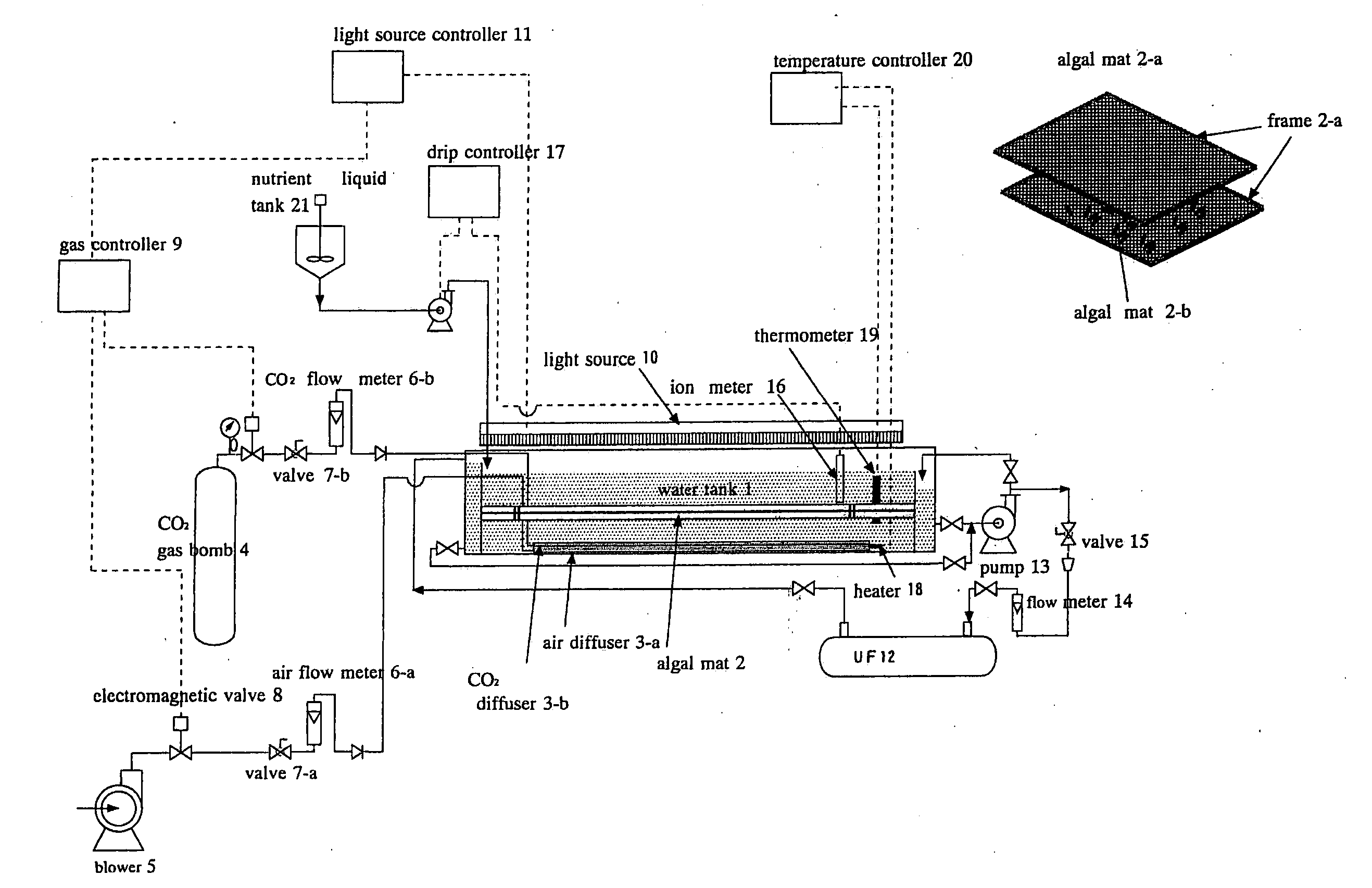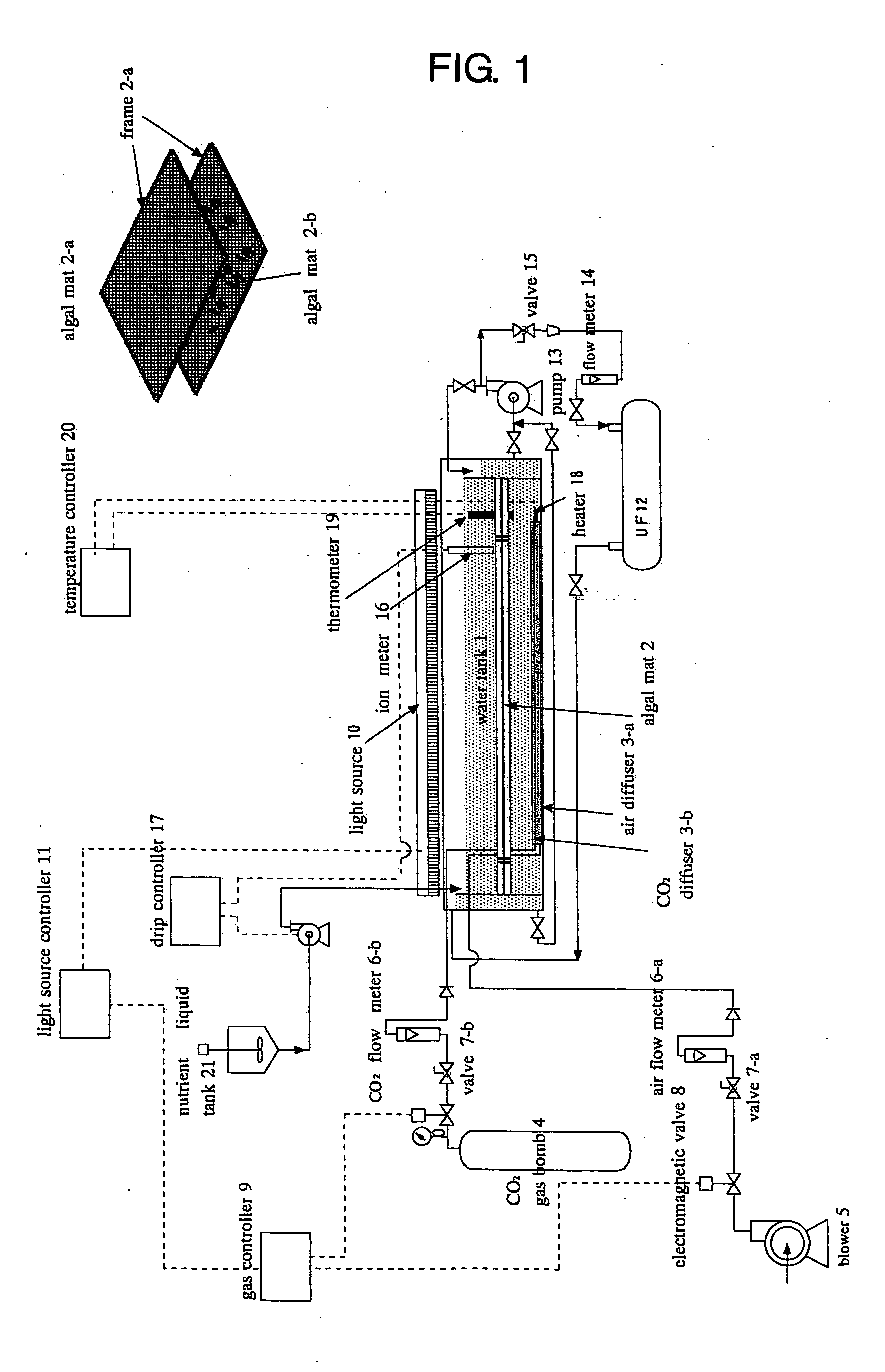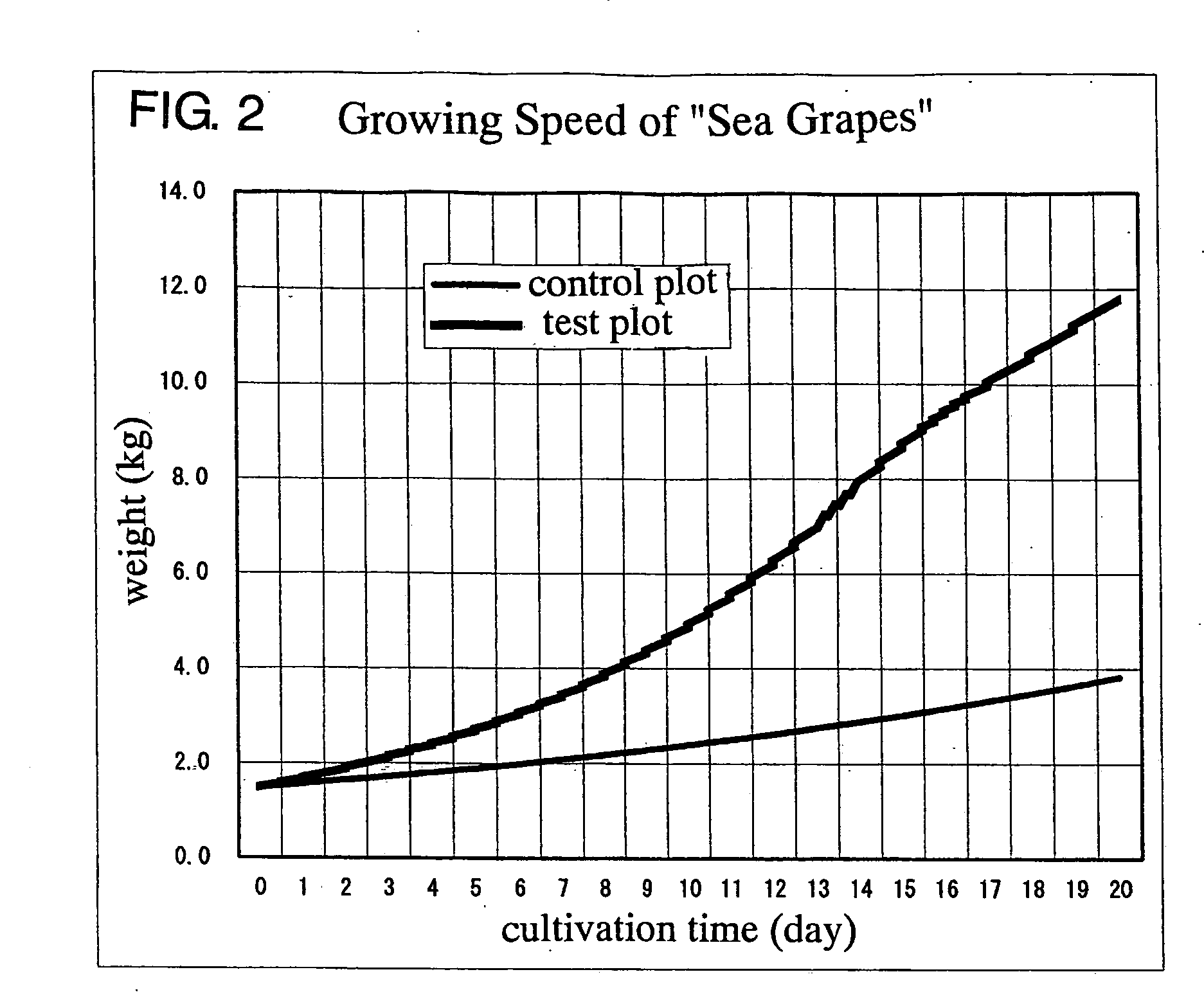Algae intensive cultivation apparatus and cultivation method
a cultivation apparatus and algae technology, applied in the field of algae intensive cultivation apparatus and cultivation method, can solve the problems of algal resources that the japanese have been using as food since time, e.g. nori, production of algal resources, etc., and achieve the effects of promoting algae growth, promoting algae growth, and good quality of sea grapes
- Summary
- Abstract
- Description
- Claims
- Application Information
AI Technical Summary
Benefits of technology
Problems solved by technology
Method used
Image
Examples
example 1
[0037]The cultured alga is Caulerpa lentillifera, which is an edible alga commonly known as “sea grape” occurring in the waters near or to the south of Okinawa.
[0038]In a culture water tank 1 measuring 150 cm×100 cm×30 cm (L×W×H internally) and having a capacity of 450 litres, a mother algal mat of 100 cm×100 cm is fixed at a depth of 15 cm. The mother algal mat 2 is made by bedding mother algae 2-b at 15 kg / m2 on a frame 2-a over which a culture net (of synthetic fiber) of 8 mm meshes is spread. The mother algae are sandwiched by two culture nets, and the frame is fastened with tools so its four comers do not open. This sandwich structure containing the mother algae within has a net-to-net distance of 2 cm. This frame with the mother algae and the two nets sandwiching them shall be called “mother algal mat 2” in this document.
[0039]At the bottom of the culture water tank 1, an air diffuser 3-a for diffusing air into the water and a carbon dioxide diffuser 3-b for diffusing carbon d...
PUM
| Property | Measurement | Unit |
|---|---|---|
| specific wavelengths | aaaaa | aaaaa |
| specific wavelengths | aaaaa | aaaaa |
| specific wavelengths | aaaaa | aaaaa |
Abstract
Description
Claims
Application Information
 Login to View More
Login to View More - R&D
- Intellectual Property
- Life Sciences
- Materials
- Tech Scout
- Unparalleled Data Quality
- Higher Quality Content
- 60% Fewer Hallucinations
Browse by: Latest US Patents, China's latest patents, Technical Efficacy Thesaurus, Application Domain, Technology Topic, Popular Technical Reports.
© 2025 PatSnap. All rights reserved.Legal|Privacy policy|Modern Slavery Act Transparency Statement|Sitemap|About US| Contact US: help@patsnap.com



